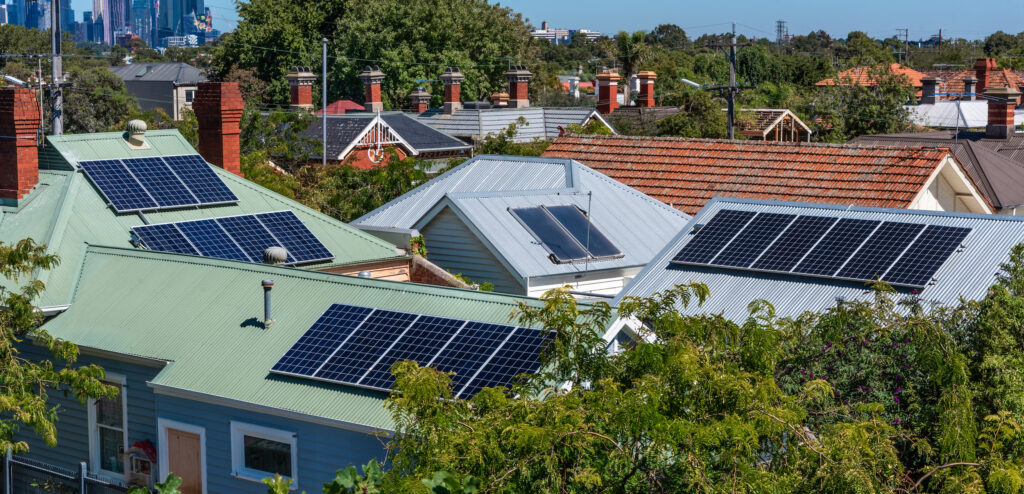Australia’s Commonwealth Scientific and Industrial Research Organisation (CSIRO) has recently announced that it will lead an innovative smart buildings pilot project that has the potential to create a new ecosystem of technologies and solutions to support flexible energy demand.
The Digital Infrastructure Energy Flexibility (DIEF) project will utilize software and technology to intelligently control the power usage of up to 200 buildings in New South Wales, providing direct digital access to a range of devices that collectively consume more than 5 MW of grid power.
“Flexible demand is critical because it ensures grid stability, reduces costs, supports increasing renewable energy integration, and enables a more sustainable and efficient energy system,” said CSIRO Energy Director Dietmar Tourbier. “This project has the potential to create a new ecosystem of technologies and solutions that will give consumers more control over their energy bills and emissions.”
CSIRO defines flexible energy demand as the coordinated orchestration of electrical load in response to generation, network, or market signals. It, therefore, provides a method for lightening the load on the power grid during busy periods, providing consumers with more control over their electricity usage, and lower peak demand.
In the DIEF project, all buildings will be connected to a data clearinghouse software platform to allow power usage of the devices to be aligned with periods of high renewable generation, thereby minimizing the use of fossil fuels.
The AUD$11 million ($7.19 million) project is led by governmental and education institutions in conjunction with a consortium of private companies to develop new technologies to support the expansion of flexible demand.
Perhaps the most interesting part, however, is the wealth of intimate building data the project will receive from the participating facilities. Leaders of the project have encouraged property owners within the pilot to share data and identify opportunities for energy flexibility and productivity improvements.
“This technology will not only allow people to get data out of their buildings and make it accessible to their service providers, but they will also be able to receive data from external providers such as the electricity market and the Bureau of Meteorology,” said Stephen White, chief research consultant for energy at the CSIRO. “When people process all this data, they can discover cost trends and plan accordingly.”

Australia’s Grid-Edge Energy Demand Projects
While “flexible demand” brings a new angle to the DIEF energy demand project, it is only the latest in a string of related pilot projects in Australia in recent years, especially within virtual power plants (VVPs). The Australian government has lauded these kinds of distributed and grid-edge approaches as key to their future energy strategy and backed two VPP projects in 2016 through the Australian Renewable Energy Agency.
The AGL project was the first large-scale wholesale market-focused VPP project in the country, the sale and installation of 1,000 BTM battery energy storage systems (BESS) in metropolitan Adelaide to create a total 5MW fleet. And, the Simply Energy VPP Project in South Australia the same year resulted in 1,361 household BESS delivering 6MW of flexible capacity and subsidized Tesla batteries were offered to the participating solar-enabled households. Results of these projects showed that customers’ electricity bills reduced on average by $668/year.
Then, in 2019, the Australian Energy Market Operator (AEMO) launched a much larger scale initiative, promising 700MW of VPPs by 2022. By the end of the AEMO VPP demonstrations in 2021, there was just 31MW enrolled, constituting just a 3% market share of contingency Frequency Control and Ancillary Services. While the pandemic would have created some challenges and some progress was made in the last 18 months, the project is still well short of its intended targets.
A project doing markedly better, however, is the Tesla VPP in South Australia, which began with a trial of 1,100 properties, a 5kW solar panel system and 13.5kWh Tesla Powerwall 2 batteries installed at no charge to households, as we covered in 2018. Today, the project includes over 4,100 households and is growing fast.
In May 2023, Tesla announced that the project had launched its fourth phase, welcoming an additional 3,000 low-income homes into the growing network. The project is open to solar-only and solar-plus battery households but also battery-only households that may not use clean power but do enjoy lower bills and blackout protection.
“The $33 million expansion, fully funded by Tesla, will make 3,000 more spots available for Housing SA tenants to join a program offering the cheapest residential electricity rate in South Australia. This expansion will save households up to $423 annually while also having battery backup and supporting our grid with renewable energy,” reads a statement from South Australia’s Department for Energy and Mining.
While not every project will be an immediate or long-lasting success, Australia’s commitment to experimentation in grid and edge energy demand is yielding results and will set the stage for larger-scale initiatives in the future. The latest pilot project from CSIRO appears to have learned from the challenges of the AEMO project by incorporating more private sector stakeholders as a driving force. In combination, these projects and those to come are gradually transforming Australia’s power system for the modern world.



